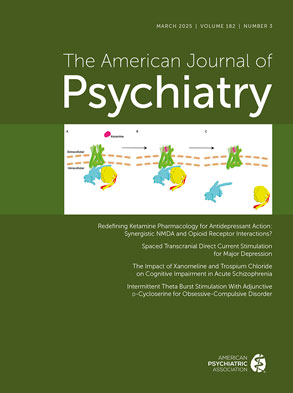Abstract
In 1955 the New York State mental hospitals undertook a large-scale program of tranquilizing drug therapy which during the first full year of its operation reached 27.9% of all cases(2). This was a 250% increase of use of somatic therapy in one year and was followed by a reduction of 500 in patient population, reversing a long-term increase of some 2,000 per year. The data for that year were analyzed and were compared with that of the year preceding when the population had increased by 2,500 and the conclusion reached that the addition of drug therapy was the only significant identifiable change which had occurred in the treatment conditions of the Department and that the favorable change was attributable in major degree to the use of chlorpromazine and reserpine.
Another 3 years have now passed and the fall has continued. The population on March 31, 1959 was 4,100 below the figure of 4 years before and this apparently represents a well-marked trend. It is, however, no longer possible to say that circumstances have remained essentially the same as they were before the use of drug therapy was undertaken; a whole series of progressive changes have occurred; a sweeping program of liberalization of hospital policy has developed; open hospital techniques, encouragement of admissions other than by judicial certification and the organization of a number of experimental programs have been undertaken. Intensification of treatment for newly admitted patients has been secured through assignment of additional personnel for admission services and special geriatric and continued treatment programs have also been set up. In spite of this, the pattern of change has not deviated significantly from that already identified when drug therapy was the only new modality. A significant increase of amount of change has, however, taken place but it becomes quite impossible to assign a quantitative role to each factor; what seems certain is that all these elements are mutually interdependent and reinforce each other. It now becomes important to analyze the trends for their significance with regard to future plans for mental hospitals, especially as many mental hospitals in various parts of the world have noted a decreased pressure for hospital beds or an outright fall in population. In some quarters these changes have been discounted as cyclical and unimportant and in others the attitude has been that it is now a matter of a relatively short time before mental hospitals will be empty and that the problem of hospital psychiatry has at long last been solved.
Our own data lead us to take a position somewhat between these two extremes and considerably toward the conservative side. The persistence of reduction for 4 successive years seems to rule out any cyclical variation and the fact that the reduction of population is limited to functional cases and most marked in schizophrenics points to the action of a specific therapeutic influence rather than a general change of policy. In New York during the last 5 years the number of cases actively carried on somatic therapy at all times has jumped from 4,000 to over 40,000, the number released from hospitals has gone from 14,362 in 1955 to 19,334 in 1958, and, in addition, the atmosphere of the state mental hospitals has been virtually revolutionized. Restraint and seclusion have been reduced to an eighth of their previous level and a series of liberal policies has been facilitated beyond what might have been dreamed of on such a scale 5 years ago.
However important these changes may be from the point of view of the mental hospital as a therapeutic organization, there are other facts which tend to support a more conservative attitude with regard to the extent that the present change may be projected into the future, and especially the projection of any factor of acceleration in the present process.
Although there has been a 34% increase in patient releases in New York State during the first 3 years of drug use, admissions were up about 12% and information from other hospital systems here and abroad indicates that this is a general phenomenon. The number of schizophrenic patients released has increased 39% during the 3 years for which data are available and the release percentage of chronic cases of up to 10 years' hospital residence has been increased strikingly, yet a simple review of the present mental hospital population indicates that there still are a considerable number of cases on the way to becoming chronic hospital residents; the number of 2-4 year cases, for instance, has been reduced by 27% but this gives secure promise to reduce the eventual permanently chronic group by this amount. Furthermore, mental hospital operations involve far more than schizophrenics. There are many other categories of cases and in our hospitals these have either remained stationary in numbers or have continued a long-term increase.
Finally, there is a small but very significant group of cases, especially in the age group below 16, which have been coming rapidly to the fore in the past few years. Numbering less than 400 in 1950, these now are being admitted at the rate of 700 to 800 per year, and that figure would be higher if our facilities were more adequate. These cases must have more than double the hospital space of adults and much more personal service. Those who fail in therapy may look forward to a long life in hospital or a long career of behavior disorder in the community. Some feel that these should be elsewhere than in a mental hospital but society seems to have decided otherwise and we have been for several years subjected to unremitting pressure for their care and treatment, and whatever else one may say it must be admitted that the problem is a psychiatric one.
Another group which warrants comment is the so-called character disorders. Patients in this group increased from 1,293 in 1955 to 1,804 in 1958. To a large extent this group overlaps the teen-age problem just described but some of them are adults. Although here, too, the battle rages as to the proper function of a state hospital, the result is still to send a larger group for such care. In the main, they, too, represent a type of psychiatric problem, although this is far from saying that every case of acting-out is properly classified in a mental hospital. What we are discussing here is the fact that an increasing proportion of such cases actually are coming to us and must be considered in our plans. Still in the same category are the alcoholics whose number increased somewhat in the last few years from 3,693 to 3,960. In the past, the mental hospitals have made but a limited contribution in this field, taking an almost neutral attitude in the rehabilitation of such individuals. This was justified only so long as we could do no better. As our facilities improve, a greater interest must be taken in this disorder. Alcoholism has long been identified as a psychiatric problem and whatever treatment has been available has tended to be in mental hospitals. It is inevitable that we shall be called upon to take a more positive role in this situation which is said to involve some 3,000,000 Americans. Up to the present, much of this has been forced into the category of a sort of "deferred business" due to sheer lack of facilities. It seems inevitable that as soon as any space becomes available this question will be moved for a more satisfactory disposition. If we look only at the reduction in our population, we may forecast a rather gradual melting away of the chronic schizophrenic cases to perhaps 50 to 75% of their present number which is a humane and practical advance that would relieve New York State of a quarter of its present mental hospital population. Statistical data and clinical experience indicate that the reduction will be more rapid on the women's services than on the male side where fewer cases are found for therapy. For some time to come the number of long-term schizophrenic cases who pass their old age in the mental hospitals will continue to increase and will continue to leave the impression that the hospitals have been overwhelmed with geriatric admissions.

